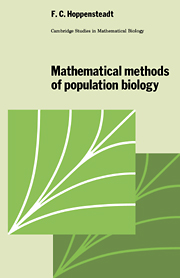Summary
Bacterial genetics
Bacteria are single-celled organisms that are enclosed within the cell wall; the interior is made up of cytoplasmic material and it contains the various mechanisms needed for cell life and reproduction. In particular, there is the chromosome, a circular loop of deoxyribo-nucleic acid (DNA), which carries a code for all cell functions. The chromosome is a double helix like a twisted ladder, the rungs correspond to pairs of nucleic acids: that is, pairs of the bases adenine, thymine, cytosine, and guanine. The only possible pairs are AT and GC. Therefore, the sequence of base pairs can be labeled by one strand. The complement strand is made by replacing each A by T, each G by C and so on.
A gene is a segment of the chromosome that codes for production by the cell of a product, such as an enzyme. The location of a gene on the chromosome is called its locus, and variant forms of the gene are called alleles.
Many types of bacteria have additional genetic material called extrachromosomal elements or plasmids. Plasmids are small circular pieces of DNA that also carry genes. However, plasmids can pass from cell to cell, and some genes can “jump” from plasmids to chromosomes.
The cell cycle begins with a newborn daughter. All of the cell's components, including the chromosome, are replicated. The replication is followed by splitting or division of the cell into two daughters, each receiving one replicate.
- Type
- Chapter
- Information
- Mathematical Methods of Population Biology , pp. 47 - 74Publisher: Cambridge University PressPrint publication year: 1982



